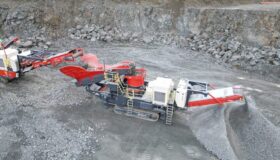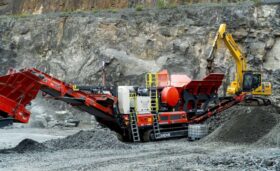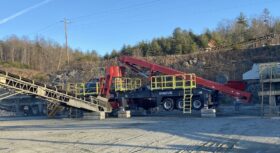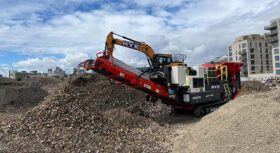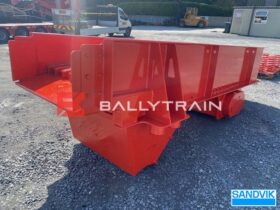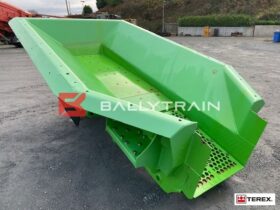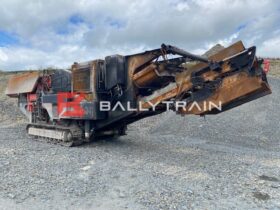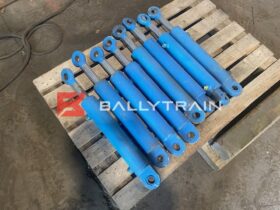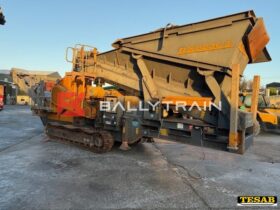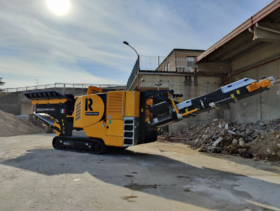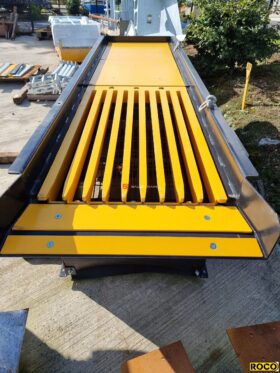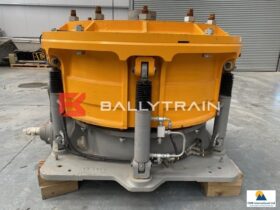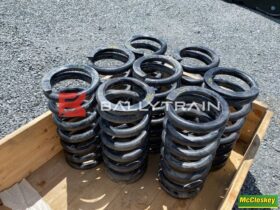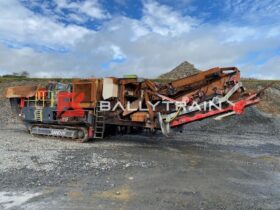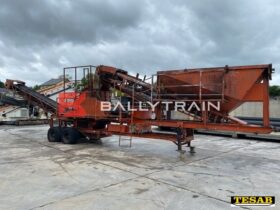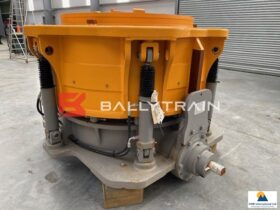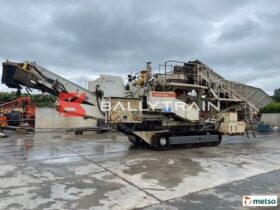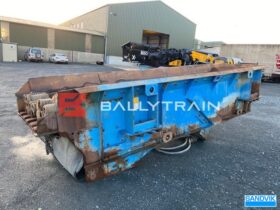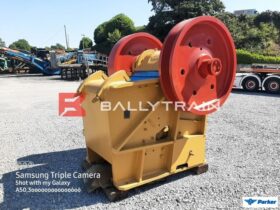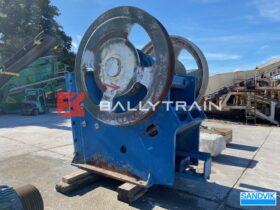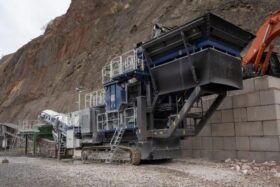Crushers for Sale (71)
Choosing the Right Used Crusher
It is vital that you choose the right crusher for the work you have available. There are a number of different types that will be best suited to different applications. These depend on the hardness of the material to be crushed, how abrasive the material is and how large the chunks are that you intend to crush. You also need to consider the ‘crushed’ product. How small do the crushed pieces need to be? What will the crushed materials be used for? Finally, you need to consider the output required for the machine. We go into all of these points into more detail below. All of the above are important whether buying a new or used crusher, but when in the market for a used machine, you also need to consider the condition of the crusher and how well it has been maintained.
Most of the crushers found her at Plant Pages UK are of the mobile tracked variety (see below for more information) and are either jaw or impact versions.
More Crushers Info
Understanding Crusher Types – Primary, Secondary & Tertiary
Crushers are categorised depending on the size of the material you are staring out with and the size you want to finish at. If you are staring off with pieces around a metre, then chances are, the best you will get from one machine run is down to about 30cm – that’s your primary crusher. To reduce the size further aim for a secondary machine that can reduce this size by a third again. If you are looking to achieve a really fine crush – let’s say for sand – then you’ll need a fine tertiary crusher.
You can now invest in a stationary hybrid machine that will act as a primary, secondary or tertiary machine
Stationary Vs Mobile Crushers
For large quarry operations with high outputs, a static machine makes sense when you can bring the materials easily to the crusher. For added flexibility a tracked crusher means that the machine can follow the path of the work and has its own engine power.
Wheels or tracks?
A wheeled crusher on the other hand is a well-engineered semi-trailer brought to site by a relatively standard truck and assembled in place using the trailer chassis as the backbone of the crusher. These are useful for short term, smaller deployments.
Impact Vs. Cone Vs. Jaw Vs. Gyratory Crushers
Jaw Crushers
If you are looking for a crusher to carry out that all-important initial crush, then chances are you’ll be looking for a jaw crusher. These are fairly basic pieces of kit and relatively straightforward to operate. – Check the teeth type as there are differences such as wide, sharp, corrugated, heavy duty. Take advice on the correct teeth for your application. The typical range of sizes for a mobile jaw crusher would be from about 30 tonnes right p to 135 tonnes. The larger the machine, the greater the maximum feed size and the higher the throughput capacity, again from about 225 to 1,000 metric tonnes er hour (mtph). Stationary machines will tend to have larger feed sizes and capacities compared to their weight (as they do not need to power themselves around).
Cone Crushers
Once the material is at the right size, the aggregates can be secondary, or tertiary crushed using a cone crusher. These work best with a maximum material starting size of about 20cm, although the sizes can vary. It is possible to adjust the settings. On a typical machine, several different crushing chambers will be available as standard. The crusher can easily be matched to changes in production by selecting the right crushing chamber and eccentric throw.
Impact Crushers
Impact crushers can be set up to handle any type of crushing application, although are best suited to primary and secondary operation. The machines use ‘beaters’ or ‘hammers’ (hence they are also known as hammer crushers) and crushed further on a series of plates which send them back to the hammers. An impact crusher can have a horizontal shaft (HSI) or a vertical axis (VSI). The VSI machines will typically have a much smaller feed size than the HIS variant but will screen to a lot finer levels. The HSI machines can effectively do the work of a primary and secondary crusher in one, thanks to their high reduction ratios.
Gyratory Crushers
These are the real high output machines. Available only as static crushers, these machines run to 500 tonnes with feed openings over 1.5 metres wide.
Latest News About Crushers
Sandvik Launch Electric QH443E Tracked Cone Crusher
Sandvik Mobile Crushing and Screening has launched the electric QH443E, the company’s latest innovation in tracked cone crushers. The new QH443E is Sandvik’s flagship Q-Range electric-driven cone plant. It takes a significant step towards bridging the gap between tracked mobile, wheeled portable, and stationary plants by combining electric drives and track mobility on a single...
Sandvik’s New UK Distributor for Mobile Crushing & Screening
Sandvik has announced the extension of the dealer agreement between Retec Equipment Limited and Sandvik Mobile Crushing and Screening to now cover the whole of the UK and Ireland territory. Sandvik has successfully been working with Retec for the sales of its mobile crushing and screening range in the UK since 2021. Initially appointed for...
New Sandvik Electric Heavy Jaw Crusher
Sandvik Mobile Crushers and Screens has launched the fully electric, UJ443E heavy jaw crusher. The Sandvik UJ443E is built upon a new ‘fully electric’ track platform and features high quality, reputable componentry throughout, as well as the latest generation Sandvik CJ412 jaw crusher. Its new modular feed station includes a larger hopper, two feeder options...
Sandvik’s Wheeled Mobile Cone Crusher Deal
Word of mouth goes a long way and upon hearing good recommendations of the reliability and versatility of Sandvik cone crusher technology, McCrary Stone Service decided to invest in a new electrically-driven UH373 wheeled cone crushing unit to replace their worn-out machine for their granite operation. McCrary Stone Service in Marshall, North Carolina, originates back...
New Sandvik QJ241 to Run on HVO for Sustainability
Rye Group have recently invested in a Sandvik QJ241 mobile jaw crusher from Retec Equipment Ltd, Sandvik distributor for the Southern counties, and in line with the rest of their fleet, are operating with HVO rather than diesel. Rye Group were the first SME demolition company in the UK to transition their entire fleet to...

